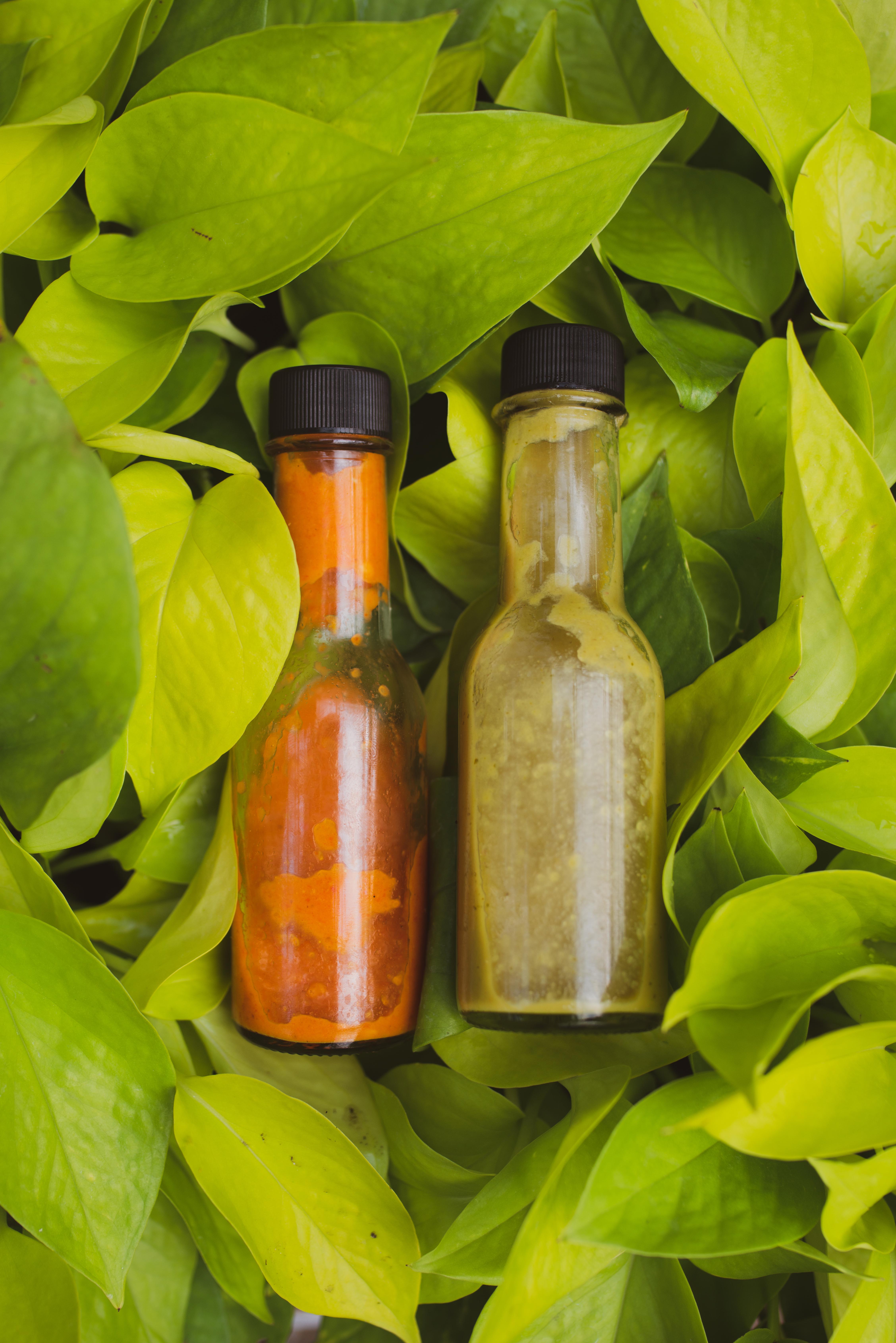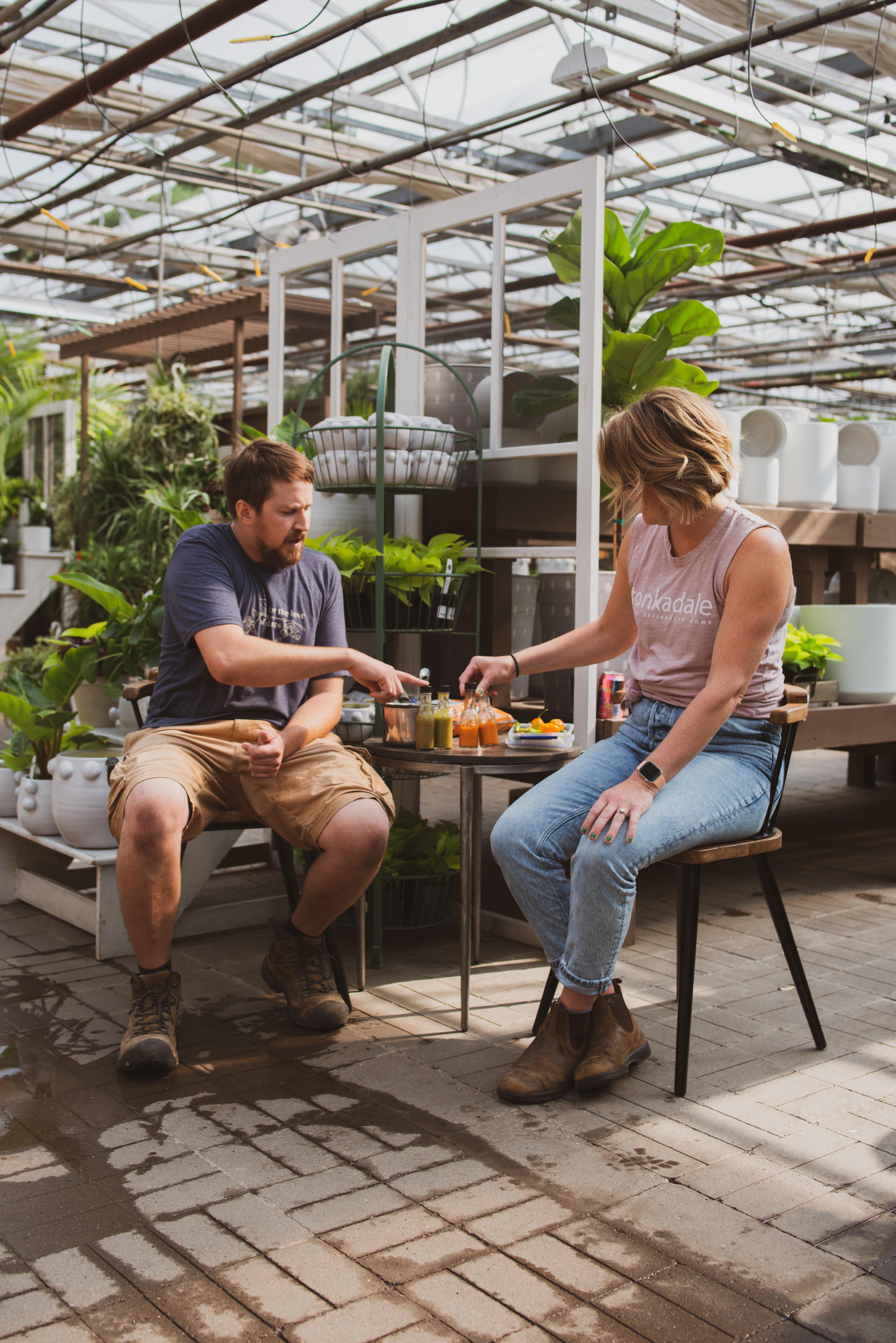Harvest Time is Here!
Posted by Jessie Jacobson on Aug 6th 2021
Late summer in the garden is all about slowing down and enjoying the fruits of your labor. Harvest time is here! Look what you did. You grew that, and now you get to eat it! Let’s take a look at some of our all-time garden favorites and how to eat them as we cruise into fall (a glorious season indeed).

Hot Peppers
Peppers are part of the Solanaceae or Nightshade family along with tomatoes, eggplant, and potatoes. The Capsicum genus includes 5 species of cultivated peppers, two of which are commonly grown by home gardeners.
Capsicum annuum
Bell peppers, Anaheim chilies, poblanos, jalapenos.
Capsicum chinense
Habanero type peppers exhibiting exceptional heat and unique flavors including Fataliis, Scotch Bonnets, and Ghost Peppers.
The hot pepper harvest is always exciting at Tonkadale. We have many staff members who prepare and train for hot sauce season each year. You can often observe staff members sharing recipes and offering taste tests in a “I dare you to” type fashion.
Hot peppers get their heat from an oil called capsaicin. The amount of capsaicin depends on the type of chili (nature), and growing conditions (nurture). The amount of capsaicin is expressed in Scoville units, a measurement invented around 1912 by the chemist Wilbur Scoville. Sweet bell peppers, which have no capsaicin, measure 0 on the Scoville scale while pure capsaicin measures 16 million units. Hot chiles, like habaneros and Scotch bonnets, typically range between 100,000 and 350,000 Scoville units. Mild chiles, like Anaheim and New Mexico, range from 500 to 2500 units. Carolina Reapers, which hold the record for the world’s hottest chili, clock in at 1.5 to 2.2 million units.
Simon’s Signature Greenhouse Green Sauce
Ingredients:
6 Jalapenos - Large
1 Poblano Pepper
1 Serrano Pepper
1/2 small-medium Red Onion
1 1/2 Tbsp. chopped Garlic or 1-2 cloves
1/3 cup Rice Vinegar
1 Tbsp. Lime Juice
1 bunch-chopped Cilantro, leaves only
1 bunch-chopped Green Onion
1 dash of Sea Salt
How To:
1. Preheat your oven to 350 degrees.
2. Rough chop the peppers and onion, keeping the seeds. Add to 9x13 inch glass baking dish.
3. Toss a small amount of olive oil to coat. Roast for 30 minutes or until soft.
4. Add peppers and onions to food processor or blender.
5. Strain contents through a fine metal strainer using a spoon to help push it through.
6. If sauce is too thin, cook uncovered in a sauce pan until reduced to desired consistency. If too thick, add small amounts of water.
7. Taste and enjoy! Use within 1-2 months, keeping contents refrigerated.
Hot Tip* - Wear gloves while chopping or rub olive oil (small amount) to hands before handling peppers.

Insert recipe here
Also check out this helpful video by our friend Brendan "Pincante" Draves - another hot pepper connoisseur!
Zucchini
Zucchini also known as summer squash is a part of the Cucurbit plant family along with cucumbers, pumpkins, and squash. Modern cultivars were developed in northern Italy in the early 1900’s. Zucchini pickles are hands down the best way to use this ubiquitous and abundant veggie. Check out this recipe from the Zuni Café in San Francisco. Amazing on turkey burgers.
- 1 pound zucchini
- 1 small yellow onion
- 2 tablespoons salt, a little more if using kosher
- 2 cups cider vinegar
- 1 cup sugar
- 1 1/2 teaspoons dry mustard
- 1 1/2 teaspoons crushed yellow and/or brown mustard seeds
- 1 teaspoon ground turmeric
1.Wash and trim the zucchini, then slice them lengthwise into 1/16-inch-thick slices on a mandoline. (You could slice them crosswise, too, but Zuni's are lengthwise.) Slice the onion very thinly as well. Combine the zucchini and onions in a large but shallow non-reactive bowl or casserole dish, add the salt, and toss to distribute. Add a few ice cubes and cold water to cover, then stir to dissolve the salt.
2.After about 1 hour, taste and feel a piece of zucchini—it should be slightly softened. Drain and pat dry.
3.Meanwhile, combine the vinegar, sugar, dry mustard, mustard seeds, and turmeric in a small saucepan and simmer for 3 minutes. Set aside until just warm to the touch. If the brine is too hot, it will cook the vegetables and make the pickles soft instead of crisp.
4.Transfer the zucchini and onion pieces to three two-cup canning vessels (or the equivalent) and pour over the cooled brine. Seal tightly and refrigerate for at least a day before serving to allow the flavors to mellow and permeate the zucchini. They'll last for a week in the fridge.
Tomatoes
Solanum lycopersicum is the genus and species of our favorite friend, the tomato. Tomatoes are technically a fruit but are widely considered a “culinary vegetable”. On May 10, 1893 The U.S. Supreme Court settled this debate, on account of a tariff dispute, declaring the tomato is a vegetable based on the popular definition that classifies vegetables by use as they are generally served with dinner and not a dessert.
Tomatoes varieties are vast and diverse and are grown for many uses – slicers, salads, canning, sauce, dehydrated or dried, fresh eating, soups, and cocktails. This gorgeous fruit expresses itself in a rainbow of colors including white, yellow, green, burgundy, purple, brown, and of course red. Tomato flavors are a balance of acidity and sugar plus a combination of volatile compounds that are less understood but highly sought after by breeder. Growing conditions are highly influential in the ultimate expression of flavor. Soil rich with organic matter, ideal temperatures such as 80-degree days and 50-60 degrees at night, and intensity of sunlight maximize tomato flavor.
Meaty tomatoes can be the basis of a whole meal. Try this easy dish as an appetizer or side at the end of a hot summer day, with a glass of your favorite Sancerre, and a gleaming sunset in the distance.
- An assortment of heirloom tomatoes, 4-6
- Crusty bread such as ciabatta or French bread
- Salty butter
- Avocado oil
- Balsamic vinegar
- All your favorite herbs including basil, tarragon, parsley, thyme, and oregano
- Creamy goat cheese
- Sea salt and pepper
Slice bread into chunky slices about the size of a deck of cards. Spread with butter on one side. Grill for a few minutes until crusty and golden. Set aside.
Slice tomatoes. Using an assortment of large and small tomatoes with varying colors looks beautiful on the plate. Arrange tomatoes on your favorite platter.
Chop up your herbs and toss together. Chiffonade the basil if you must!
Plop goat cheese in a small dish, drizzle with avocado oil and balsamic vinegar, sprinkle with salt and pepper.
Grind a generous amount of salt and pepper on tomatoes. Spread a generous handful of assorted herbs on top. Drizzle with avocado oil and balsamic vinegar.
Serve. Spread goat cheese on crusty bread, top with tomatoes. Devour.
Check out our latest video to learn more about creating delicious snacks with your veggies:

Summer dining solved! You grew it, you made it. Healthy, delicious, curated, and elevated.

